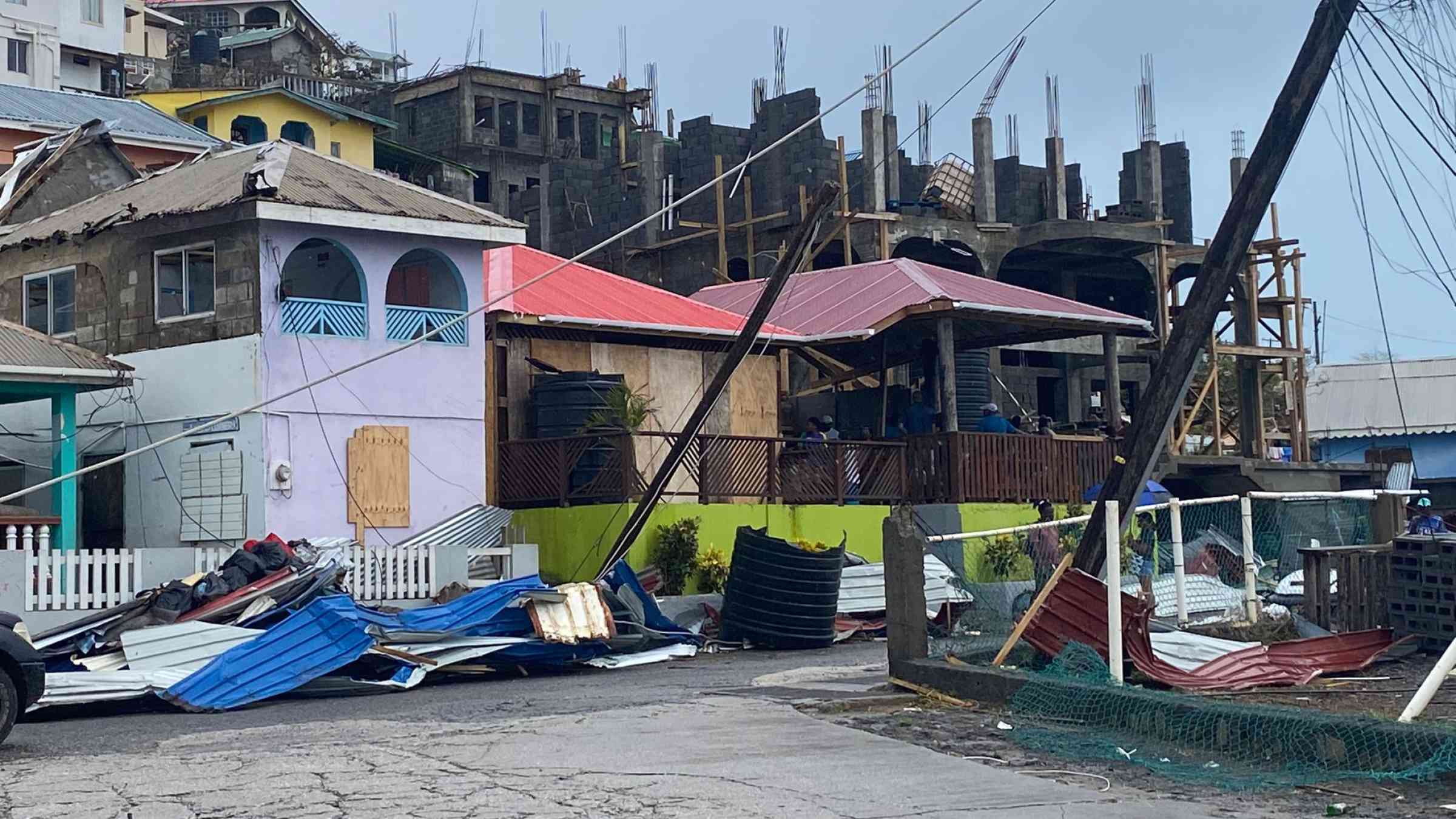Hurricane Beryl: For hard-hit islands, preparation paid off with rapid response. But recovery is complicated by widespread damage

One week after the storm, communities are coming to terms with the full extent of Hurricane Beryl's destruction. And hurricane season is far from over.
Well before Hurricane Beryl made landfall on the Caribbean Island nations of Jamaica, Grenada, and St. Vincent and the Grenadines, Red Cross volunteers, local authorities and residents had been working hard to prepare for the worst.
Anticipating road blockages, power outages and scarcity of clean water and food, Red Cross crews were preparing relief packages and moving supplies as close as possible to the places most likely to be in need after the storm.
By the time Hurricane Beryl made landfall in Grenada, St Vincent and the Grenadines and Barbados, it was classified as a category 4 hurricane. High winds toppled trees and power lines, tore entire roofs from houses and in some cases, blew buildings completely off their foundations.
On the islands of Carriacou and Petite Martinique, more than 95 per cent homes of were either damaged or destroyed, according to official estimates. Aerial photos showed large swaths of destruction where neighborhoods once stood. Nor did the storm spare health facilities, airport buildings, schools or petrol stations.
When Hurricane Beryl arrived in Jamaica, it brought extensive damage across the island. Roads were blocked by fallen trees, downed power lines and landslides, while power outages and structural damage to important public facilities hampered response efforts.
"This is the strongest hurricane to strike Jamaica in almost 17 years - since Hurricane Dean in 2007," said Rhea Pierre, the IFRC's disaster manager for the English and Dutch-speaking Caribbean.
On all the islands, relief and rescue efforts were complicated by continued bad weather, power outages, road blockages and damage to infrastructure. In many cases, the hardest affected areas were also cut off from basic services.
Thanks to storm warnings, thousands of people gathered safely in shelters. But the storm also claimed lives. Authorities have so far confirmed at least 15 deaths: five in Grenada, five in Saint Vincent and the Grenadines, two in Jamaica and three in Venezuela. But the number could still rise as the assessment continues.
Preparation paid off
Despite the damage, the advance work paid off. In the aftermath, volunteer crews were ready to act, visiting hard-hit communities and making detailed assessments of people's needs. They handed out supplies, offered first-aid and lent a listening ear to people coping with their losses.
"We are out giving out distributions such as tarpaulins and jerry cans, as well as cleaning tapes and food supplies for those families who were affected by the hurricane," said Zoyer John, a volunteer for the Grenada Red Cross as she stood in front of a badly damaged house.
"Most of the damage to our tri-island state occurred in the islands of Carriacou and Petite Martinique. But here on the main island, on the north of the island, a lot of people were also impacted."
In Jamaica, Red Cross volunteers were also on the ground quickly doing rapid assessments and distributing supplies they had prepared at the beginning of the hurricane season. As the hurricane approached, those stocks were moved to safe storage facilities close to the places where the impact was expected to be heaviest.
All this advance work was bolstered by an allocation of CHF 1.7 million from the IFRC's Disaster Response Emergency Fund (IFRC-DREF), based on the anticipated needs of people in the storm's path. This forward-looking outlay meant that communities could count on emergency assistance without having to wait for fundraising after the storm.
In the days following the hurricane, the IFRC also launched an emergency appeal of CHF 4 million to provide immediate humanitarian assistance, protection and recovery support to the most affected families. The operation will support 25,000 people (5,000 households) over a one-year period.
In the initial days, the focus will be on the distribution of relief items and short-term shelter solutions that will cover people's immediate needs. Over time, however, the plan is to also carry out interventions that help people ensure access to dignified and safe shelter - focusing on building back better - as well as provision of cash and vouchers for specific goods.
It will also offer various supports for restoration of livelihoods. Due to the storm's impact on infrastructure, many people on the islands have been left without an income. In Barbados, the fisheries industry and small business owners along the southern coastlines were heavily affected by storm surges that caused widespread damage.
Health interventions are also planned to prevent the transmission of infectious diseases. National Societies will focus on supporting people's hygiene needs as well as safe water, mainly through the delivery of household water-treatment kits.
More storms to come
On the minds of all Red Cross National Societies in the region is the fact that hurricane season is just beginning. This is one reason the emergency appeal also supports interventions aimed at reducing people's vulnerability to future disasters and enhancing community disaster response.
With Hurricane Beryl now one week in the past, residents must now try put their lives back on track while at the same time, getting ready for whatever might come next.
This is the new reality that Caribbean small island nations face as hotter-than-normal water temperatures in the southern Atlantic and Caribbean act as fuel for storms, causing them to intensify quickly into major hurricanes. This gives communities less time in between storms to recover and prepare.
"Events like these are no longer a one-off and this highlights the need for local actors to lead the way in preparedness and anticipatory action," added Rhea Pierre, the IFRC's disaster manager for the English and Dutch-speaking Caribbean. "We are seeing that kind of preparedness in action right now."